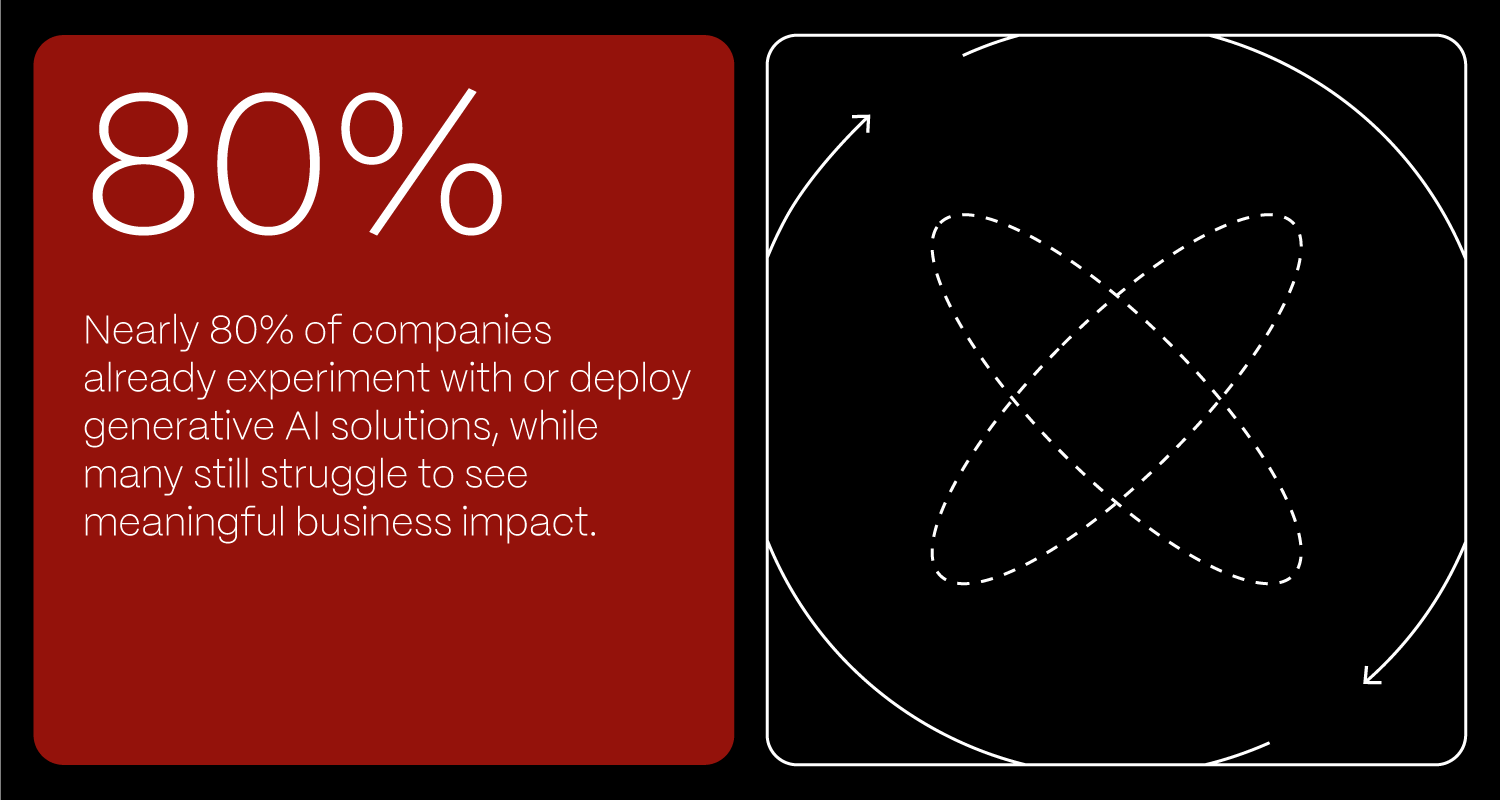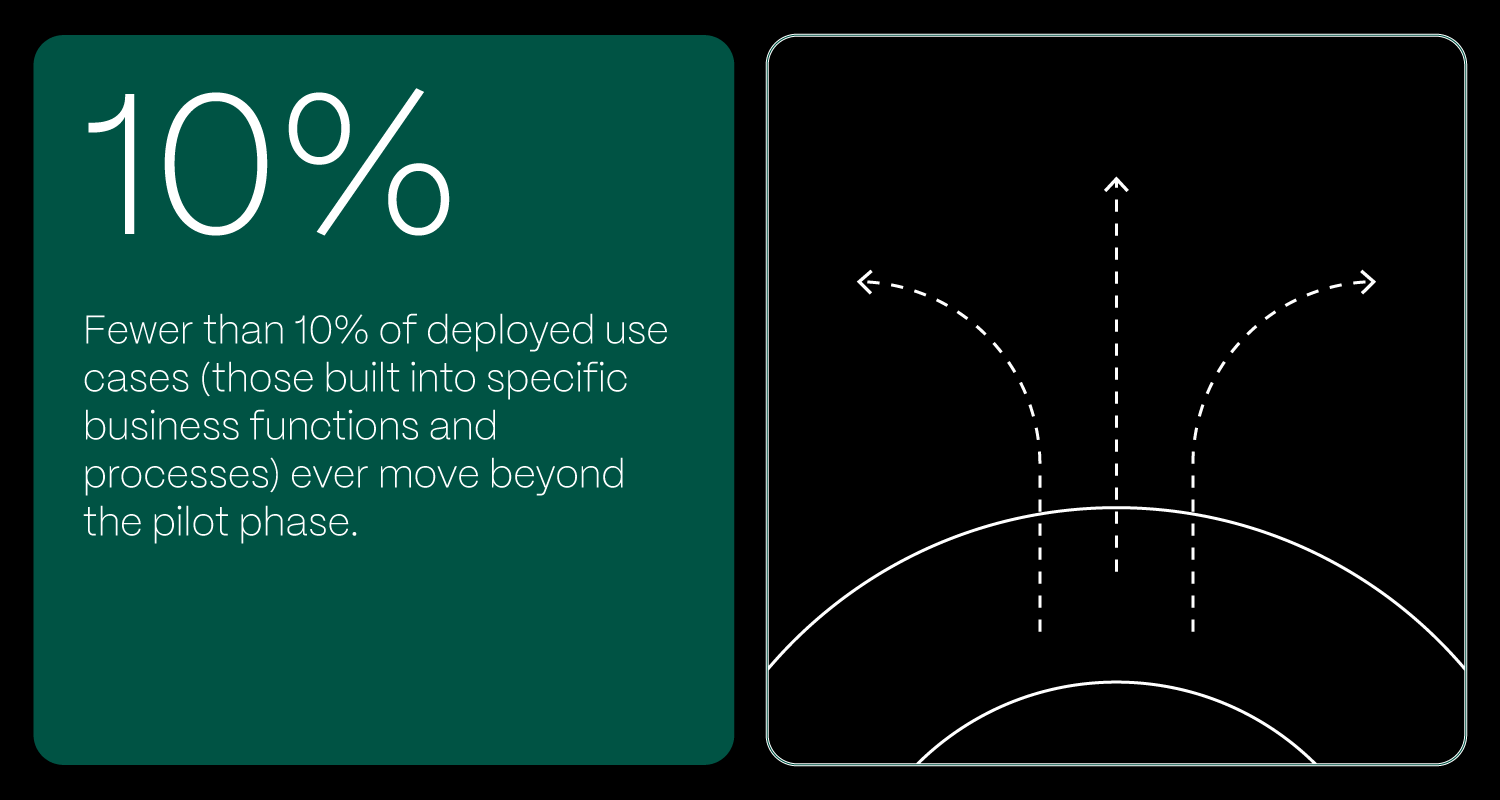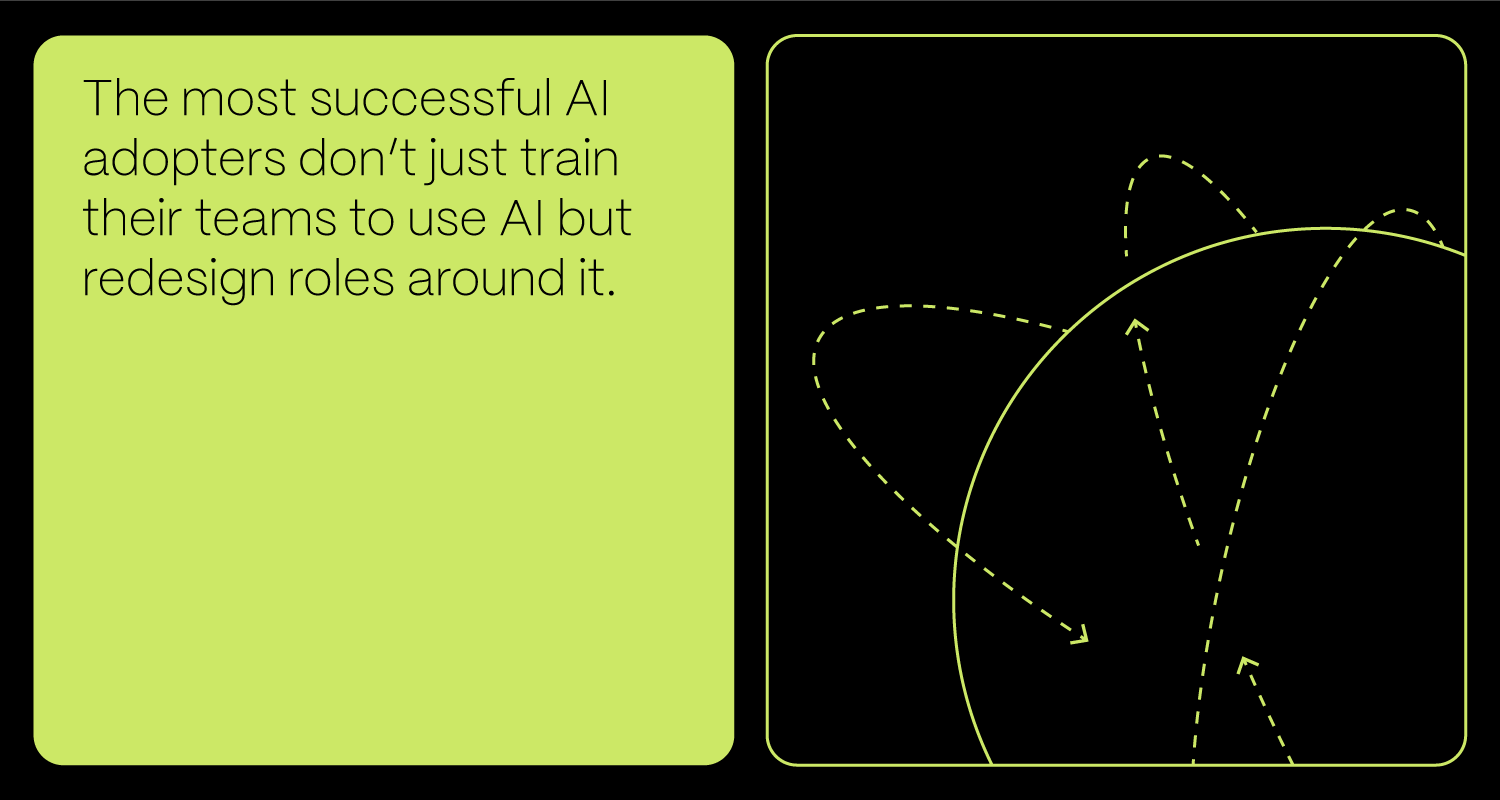Digital transformation: The roadmap to successful agentic AI implementation
Agentic AI promises real operational impact. Not just automation, but autonomy. Done right, it can reduce manual operations, streamline decisions across systems, and free teams to focus on work that actually requires human judgment.

The McKinsey report indicates that, while generative AI adoption is widespread, with nearly 80% of companies already experimenting or deploying solutions, many still struggle to see meaningful business impact.
To see real value, businesses need more than good intentions and a model with an API. They need a clear roadmap – one that connects strategy, data, people, and product design into a system where agents can work reliably, transparently, and with purpose.
Why Agentic AI is not necessarily delivering
Businesses invest in tools like AI copilots and chat interfaces, but often only to solve isolated or surface-level tasks.
The challenge lies in scaling AI where it truly matters: across workflows that span systems, teams, and shifting priorities. That’s where most implementations stall. High-value use cases like compliance, customer onboarding, or operational triage are complex. They rely on context, coordination, and decision-making, not just automation.
Moving past this gen AI paradox, as McKinsey names it, requires a shift in how we think about AI systems. Agentic AI offers a way forward, but only when it's treated as a foundational part of how work gets done, not just an enhancement layer.

Get the stories shaping digital innovation!
Join our newsletter and stay up to date with the latest in tech and innovation.
Sign up hereFirst, you don’t need agentic AI everywhere
Agentic AI isn’t a universal solution, nor should it be treated as one. It works best when it’s applied with intent in places where repetitive logic, defined goals, and a certain level of complexity justify autonomous decision-making.
For simpler, straightforward tasks like fetching data, sending reminders, or triggering standard workflows, automation or scripting is often a faster and more appropriate fit.
Agentic AI becomes valuable when:
- there's a need to coordinate multiple steps across systems;
- priorities shift based on live input;
- tasks involve multiple systems or teams;
- human judgment is being used to follow repeatable patterns.
Take, for example, organising support tickets, onboarding a new customer across systems, or following up with personalised offers after an abandoned checkout. These are day-to-day operations but they often remain manual and reliant on tribal knowledge. Not to mention that they are often vulnerable to delays due to unclear ownership.
This is where AI agents can step in as part of the underlying process infrastructure. They monitor what's happening, take predefined actions where possible, and escalate only when input from a human is truly needed.
Recent research backs this up. According to the abovementioned McKinsey report, agent-based systems in financial services, used to scan regulatory sources, interpret policy changes, update internal protocols, and notify the right teams, helped cut manual effort by more than 60%. They also improved transparency thanks to automated audit trails, and made compliance work far less reactive.
And it’s not just about efficiency. When designed with real operations in mind, agents can reduce handoffs and delays, add structure to what’s often informal or fragmented, and free people up to focus on work that actually moves the needle.
What to consider before implementing agentic AI
Organisational readiness is what makes the difference. And that is where most companies typically fall behind. At the beginning of this guide, we mentioned that 8 in 10 businesses use AI on a daily basis. However, another study by McKinsey shows that vertical use cases (those built into specific business functions and processes) have struggled to scale in most organisations. In fact, fewer than 10% of deployed use cases ever move beyond the pilot phase.
Why is that and what are the key factors they should keep in mind when it comes to agentic AI?
Data readiness matters more than volume
Agentic systems rely on structured, reliable, real‑time context. In other words, it’s not just a big dataset.
Siloed sources, inconsistent naming or batch-only updates drastically limit an agent’s ability to act reliably. What you need is a unified data layer with near-real-time access, which is particularly important for vertical workflows.
Agents need clear boundaries and escalation paths
Autonomous doesn’t mean unsupervised. Define confidence thresholds, fallback rules, and escalation logic before launch. Without that, agents either avoid acting or act without accountability, eroding trust.
Also, whether an agent is flagging suspicious activity or approving a user action, every step it takes must be recorded and understandable.
That means keeping track of:
- what information it received (the input);
- why it made the decision it did (the reasoning);
- what it actually did (the output);
- and what happened as a result (the outcome).
This level of traceability isn’t about paperwork. It’s what allows ops teams to understand, troubleshoot, and improve agent behaviour. And in regulated industries, it’s the difference between compliance and a fine.
Compliance must be embedded, not bolted-on
In strict sectors, such as healthcare, finance, banking, or insurance, regulations aren’t just checklists. They shape how products and processes work. Agentic AI can’t be treated as a separate layer that’s “plugged in” after the fact. It needs to operate within existing rules from day one.
That means:
- granular access control, so agents only see the data they’re allowed to;
- manual override options, so humans can step in when needed;
- built-in approval workflows to ensure decisions align with internal and external compliance policies.
Teams need to be ready, not just the tech
Agentic AI introduces new dynamics into the way teams operate, especially when systems begin to take initiative, make decisions, and interact across workflows without human prompting.
That shift demands more than technical integration. It requires clear operational frameworks and a mindset shift across product, engineering, and business teams. Before introducing agents into critical processes, organisations need to define how responsibility is shared. Where does the agent operate independently? When should it defer to a human? Who reviews what it’s doing and how often?
Without clear boundaries and oversight, agents quickly become a risk. They’ll either be limited to trivial tasks or operate in ways no one really understands. In either case, the result is the same – low trust and low impact.
And then there’s the people side. The McKinsey 2024 research shows that the most successful AI adopters don’t just train their teams to use AI but redesign roles around it. That means rethinking how decisions are made, what work is delegated, and how success is measured. Yet only 8 % of surveyed organisations say they’ve changed their operating model to support AI at scale.
Beyond governance, teams also need practical experience working with AI systems. That includes interpreting agent decisions, reviewing outputs, and feeding real-world feedback into the loop. It’s not just about supervising the agent. It’s about learning how to collaborate with it.
This shift often requires changes in tooling and communication. Dashboards, audit logs, agent activity summaries – these aren’t nice-to-haves. They’re essential for building confidence and transparency, especially in regulated industries like finance and healthcare.
Agentic AI isn’t just another automation layer. It introduces autonomy. And with autonomy comes the need for shared context, stronger monitoring, and a culture that treats AI systems not as black boxes, but as evolving participants in the product and business.
Your roadmap isn’t broken. It’s just not agent-ready.
You don’t necessarily need new architecture. Sometimes, it’s enough to adapt your existing one so it supports autonomy where it makes sense. However, that means excellent data governance, clear decision boundaries, ownership across teams, and room to iterate.
That’s where a digital product development partner like Vega IT can help. We build our approach around what’s already working. We look at what’s in the pipeline and help you:
- pinpoint workflows where agents can operate reliably without constant oversight;
- integrate AI into your current systems without changing what already works;
- set up decision logic, escalation rules, and feedback loops so agents improve over time;
- build visibility into what agents are doing, from logs and dashboards to audit trails;
- align technical and non-technical teams on how agents behave and when they should defer.
Where does agentic AI fit into your roadmap? Contact us and let’s explore it together.





